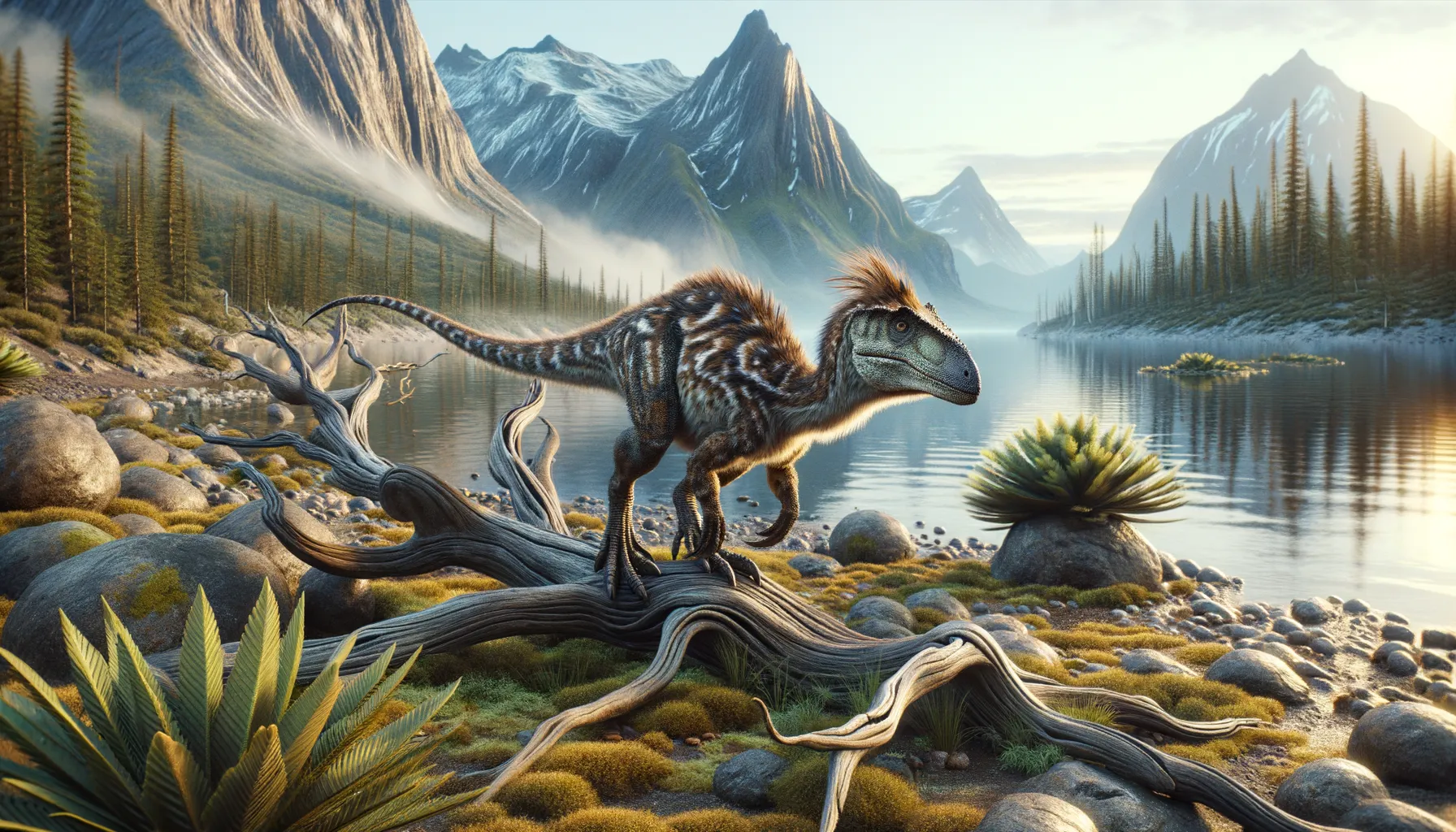
Talos
A swift predator with razor-sharp claws!
Period
Cretaceous
Length
Measured about 2 meters in length.
Height
Around 1 meter tall at the hip.
Weight
Approximately 30 to 40 kilograms.
Talos is a small but agile dinosaur that lived around 76 million years ago during the Late Cretaceous period. Known for its sharp claws and swift movements, it was a formidable predator. Its remains were first discovered in Utah, offering significant insights into its biology and behavior. Researchers believe that Talos was closely related to other feathered dinosaurs, making it an interesting subject in the study of avian evolution.
Diet
Talos primarily ate small animals, such as lizards, mammals, and possibly small dinosaurs. Its diet also included insects and other invertebrates, which it could have caught using its speed and agility.
Hunting
Talos likely relied on ambush tactics and sudden bursts of speed to catch its prey. Its sharp claws were ideal for grasping and holding onto prey, while its keen senses helped it locate targets in dense vegetation.
Environmental challenges
Living in the diverse and changing landscapes of Late Cretaceous North America posed various challenges. Talos had to navigate dense forests, floodplains, and the threat from larger predators. Climate changes could have influenced food availability, requiring adaptability in its hunting and survival strategies. Competing for resources with other small theropods was another significant challenge faced by Talos.
Speed
Likely quite fast, possibly running up to 40 mph.
Lifespan
Estimated to live around 15 to 20 years.
First discovery
Discovered in 2008 in the Kaiparowits Formation, Utah.
Fun Facts
- Talos was a small, fast-moving dinosaur that lived around 76 million years ago during the late Cretaceous period.
- It belonged to a group of feathered dinosaurs known as the Troodontidae, which were closely related to birds.
- Talos's name comes from the mythological Greek bronze giant, highlighting its unique strength despite its small size.
- Fossils of Talos were first discovered in Utah, United States, in 2008, providing insights into the anatomy of these agile creatures.
- One of the fascinating features of Talos is its sickle-shaped claw on its foot, which scientists believe was used for hunting or defense.
- Unlike some other dinosaurs, Talos had relatively large brains, suggesting it was likely more intelligent than many of its contemporaries.
- Talos's body was covered in feathers, which likely aided in temperature regulation and possibly helped in displays to attract mates.
Growth and Development
From hatching, Talos underwent rapid growth to reach maturity quickly, providing it with better chances of survival. Juvenile Talos might have stayed in groups for protection. As they matured, their physical abilities improved, allowing for more efficient hunting. The presence of feathers suggests a role in regulating body temperature or aiding in mating displays.
Habitat
Talos inhabited forested regions and wide floodplains that were rich in plant and animal life. These areas provided ample cover and hunting grounds. Water sources in its habitat could have supported diverse ecosystems, contributing to Talos's varied diet. Seasonal changes in the environment required Talos to be versatile in its survival strategies.
Interaction with other species
Talos shared its habitat with various other dinosaurs, including both predators and herbivores. It likely competed with similar-sized carnivores for food. Its presence could indicate a well-balanced ecosystem with a hierarchy of predators and prey. Talos might have also scavenged from larger predator kills when opportunities arose.
Natural lifespan
In the wild, Talos could live up to 20 years if it avoided predators.
Reproduction
Talos reproduced through eggs, like most theropod dinosaurs. Nesting in concealed areas might have helped protect eggs from predators. Parental care, if present, was minimal, with juveniles quickly fending for themselves after hatching. Reproductive success depended on the availability of suitable nesting sites and environmental conditions.
Social behaviour
There is limited information about Talos's social behavior, but it might have lived and hunted in small groups. Social structures, if existent, could have facilitated cooperative hunting strategies. These groups might have been temporary, formed based on availability of prey. Communication within the species possibly involved both vocal and visual signals.
Fossil locations
Talos fossils have primarily been found in the Kaiparowits Formation of Utah. This area provides rich fossil beds dating to the Late Cretaceous period. The discovery of Talos has contributed to understanding the diversity of theropod dinosaurs in North America. Continued excavations in the region may reveal more about its lifestyle and interactions.
